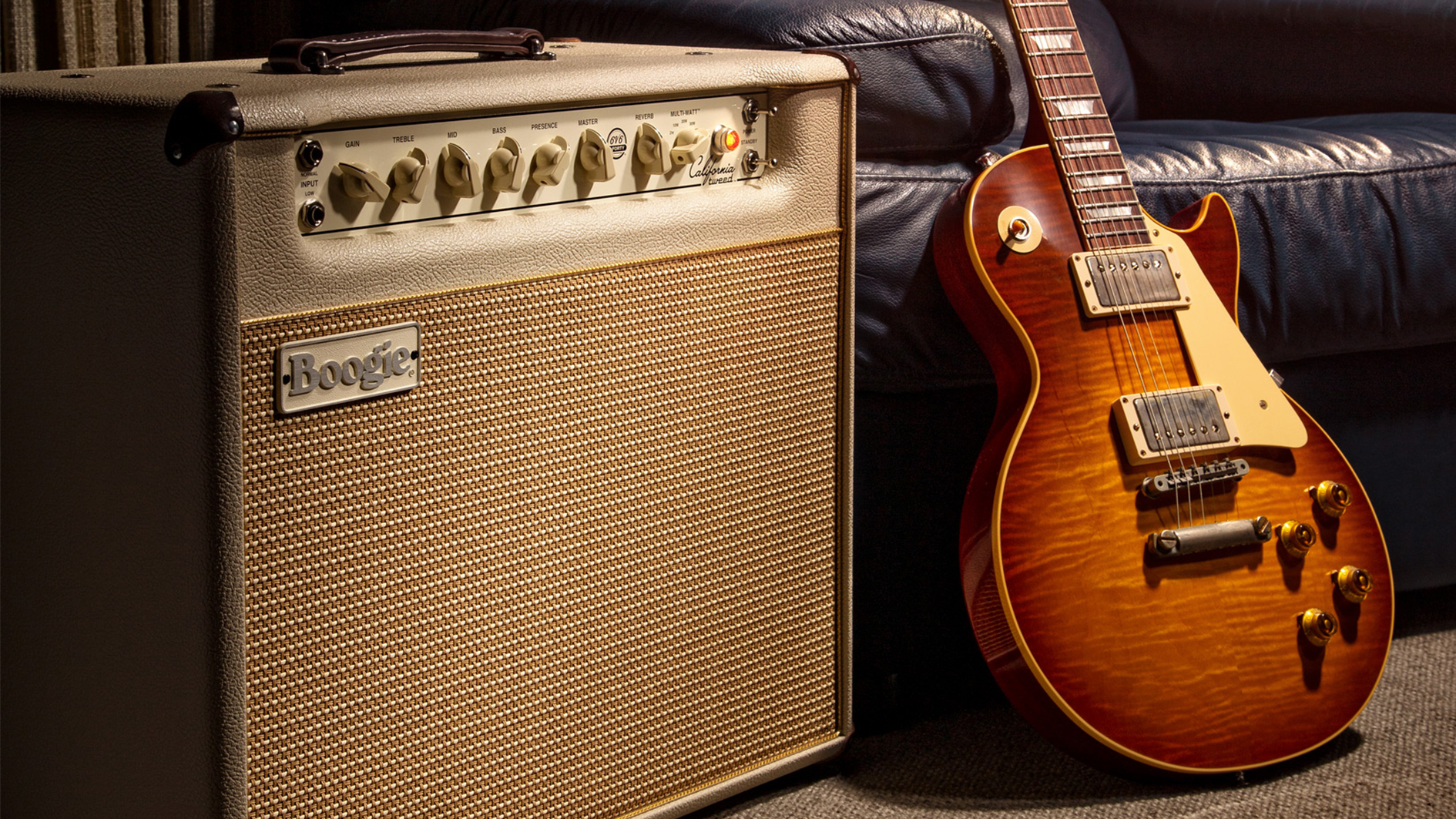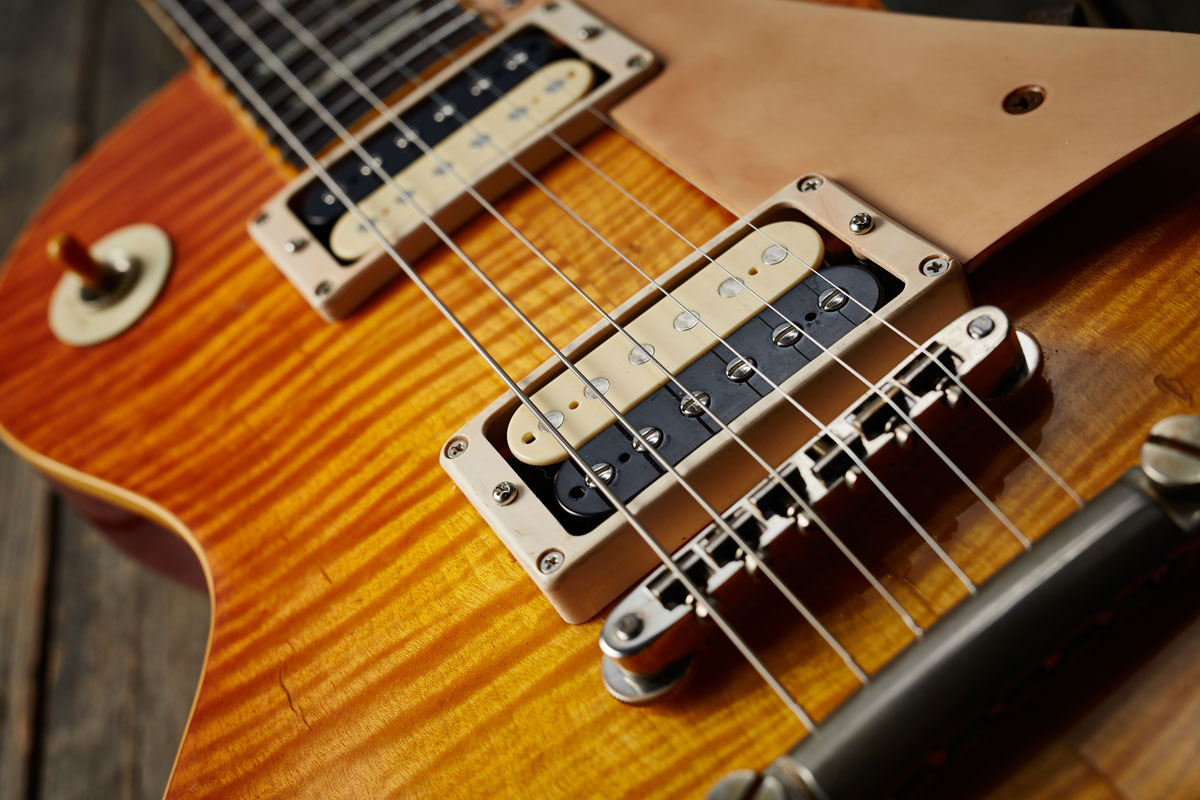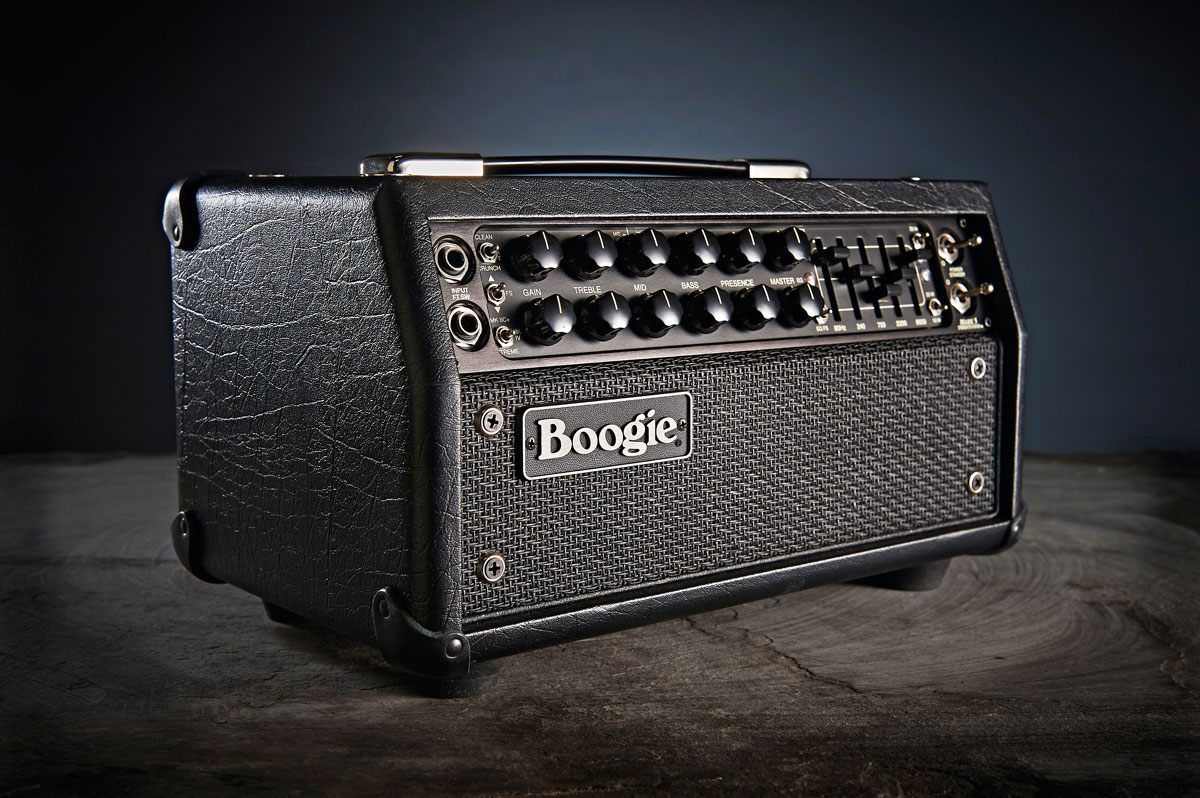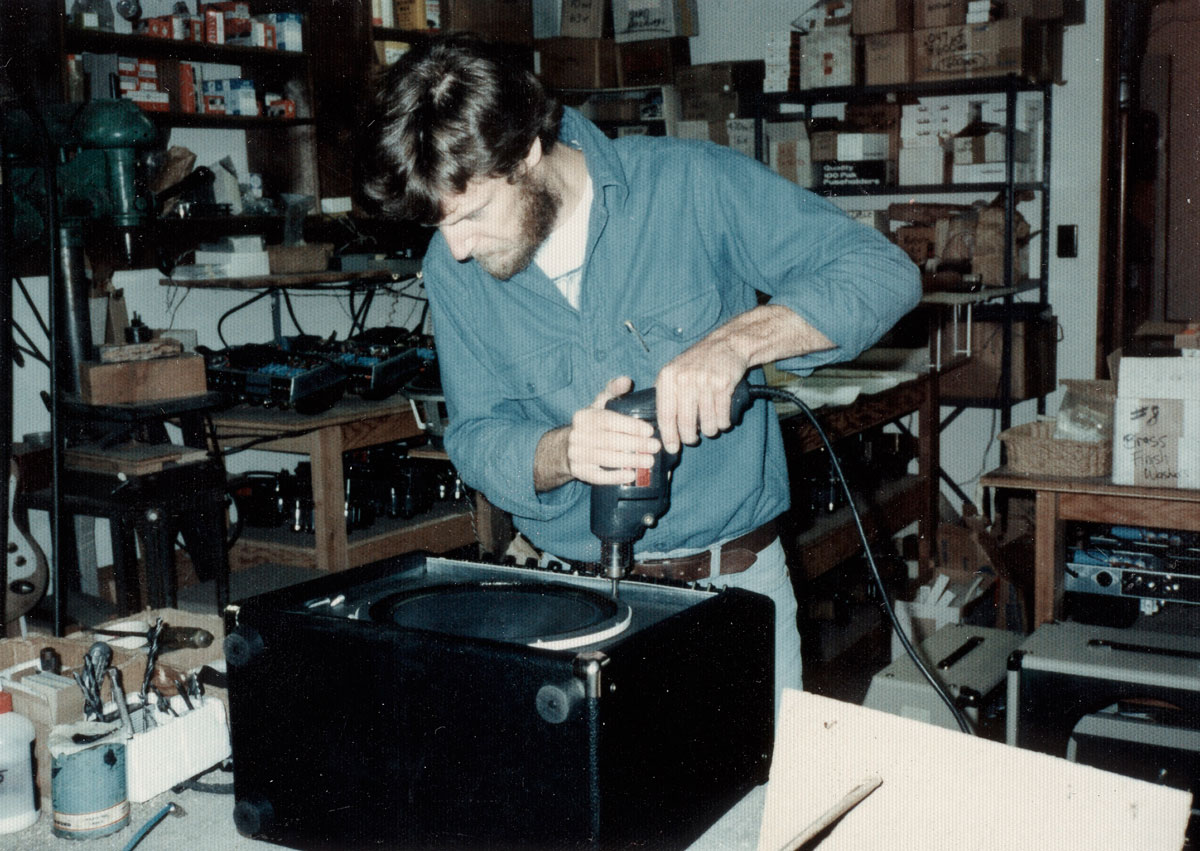JC Curleigh, Cesar Gueikian and Randy Smith on Gibson's monumental acquisition of Mesa/Boogie – and what it means for the iconic brands
The guitar giant kicks 2021 off with a bang by adding the revered amp company to its stable of brands

Not even a full week into the new year and there’s already been some, quite frankly, huge developments in the guitar trade. We are, of course, referring to today’s announcement of Gibson’s acquisition of Mesa/Boogie – two of the most influential American brands of all time joining forces for what will be undoubtedly some very interesting developments to come.
Mesa/Boogie, often cited as the original boutique amplifier company, was founded 51 years ago by Randy Smith – who will continue to oversee the groundbreaking circuits and designs under the new leadership at Gibson.
His amps have been used by the biggest and best, from the neck-snapping heaviness typified by bands like Metallica, Tool and Dream Theater, to rock legends like Prince, Carlos Santana and Mark Knopfler.
And Gibson’s heritage is one that needs little introduction, stretching all the way back to 1902 when Orville Gibson decided to form his own company to produce mandolin-family instruments, including archtop guitars, acoustics, and eventually the Les Pauls, SGs and 335s that continue to thrive in popularity to this day.
After a short period of uncertainty – ultimately rescued from bankruptcy in 2018 – the American manufacturers have come on leaps and bounds under the new leadership of President and CEO James ‘JC’ Curleigh and CMO Cesar Gueikian. This will be another step in renewing the iconic brand’s legacy and commitment to musicians across the world.
Naturally, we had to find out more about the exciting new merger and tracked down JC, Cesar and Randy for their very first interview in business together…

Congratulations on the new partnership! Take us back to the moment the very seeds were planted…
Get The Pick Newsletter
All the latest guitar news, interviews, lessons, reviews, deals and more, direct to your inbox!
JC: “Well, we were all at Woodstock together back in '69 and thought, ‘What the hell?!’ Not really [laughs]. I’ll start from the end and the others will take you back to the beginning. We’ll spare you the whole 120 years at Gibson and over 50 with Mesa.
“I was wondering what would be next for Gibson. As you’ve seen in the last few years, there’s been a lot of change. A few years ago, people were wondering what’s going to happen to Gibson and now they’re seeing it.
“Hopefully they’re seeing we’ve energized and inspired our artists, paying attention to the quality and craftsmanship – that’s been a source of pride for all of us here, as well as our fans, dealers and artists.
“So we were thinking about what would be next and we’ve always been about helping to shape and inspire sound. We had the guitars, but what would really make a complementary experience would be plugging those guitars into something.
We could have started the process of making amplifiers on our own, but if we dared to dream – who would be American-crafted company that represented the same vision as Orville’s?
Cesar Gueikian
“We don’t have Gibson amps today, so we started thinking about who is the best out there – not just in terms of their brand, but also like-minded in terms of leveraging the iconic past and leaning into the innovative future. There was only one answer and that was Mesa/Boogie.”
How did the proposition initially reach you, Randy?
Randy: “What I like about it is that this began out of a friendship between our [General Manager] Steve Mueller and Cesar, bonding over guitars and amplifiers. Steve was blown away by the quality of the new Gibsons coming out under the new leadership. He’d been raving to me about how unbelievable they played and sounded.
“Then Cesar asked if Mesa would be interested in building some GA-20 and 40 amplifiers at some point, which started the discussion. It’s great, just a bunch of musician friends hanging around and listening to what each other like. This is what results! That’s how Mesa/Boogie started in the first place and may not be too far off the way Orville Gibson got started.”
There are definitely similarities between the two companies – fulfilling the promise of high-quality, American-made equipment first and foremost…
Cesar: “Exactly. Like JC said, we wanted to get back into providing the full range of sound. When a guitar starts the journey of leaving the factory, it will find someone who falls in love with it. That person will then need to find the amplifier that they love, the one that will project that sound.
“We could have started the process of making amplifiers on our own, but if we dared to dream – who would be American-crafted company that represented the same vision as Orville’s?

“That vision of making instruments where everything inside had its role in contributing to the overall sound. We all agreed, that’s 100% Randy! Everything that goes into a Mesa/Boogie plays a part. If we dared to dream, we are American-made and played by the world, so which would be the company we would want to associate ourselves with.
“It could only be Mesa/Boogie, with no doubt. That started the whole conversation and made us wonder if this was something Randy would even be willing to contemplate…”
Thankfully, it was good news on that front!
Randy: “In the case of Gibson, yes. In the case of anybody else… no! It was that simple. This was all based on the shared values demonstrated by the quality of Gibson today. It was close to our heart, and unlike the old Gibson.
“In my 50 years plus in this industry, almost 60 by now, I’ve seen Gibson and Fender run into really rough times. I’ve actually seen both of them go bankrupt multiple times, two or three for each company.
“That’s why I never got big, I never grew beyond what my company itself could afford to do and that provided a measure of security. No bank could come along to cause us to compromise and service their debt.
“The flipside was that there were some limitations, but we were okay with that. Of course we wanted global domination, but that was in terms of tone and innovation rather than making the most amplifiers… we knew we would never do that! It’s like Ferrari don’t care how many Toyotas get sold!
“This partnership offers so much for all of us here. I’m 75 years old now and I will continue to do this. I have a whole family of people here that have built their lives around working here – they have rent to pay, cars to drive. It’s funny, the people who have been here for 20 or 25 years are still called the new guys by those who have been here for 40 plus. It’s a reciprocal commitment.
“I want to see those people’s futures secured as much as possible. When I’m gone, they are not going to be dependent on me! It’s a win-win all round.”
Another similarity is the effect your companies had on early rock musicians looking for more output and gain…
Cesar: “We are so excited for this to come together because this guy is the pioneer of high gain. He invented high gain! There simply aren’t many companies with the kind of heritage and legacy Gibson and Mesa/Boogie have, especially with the founder still involved and still working as the master designer and pioneer? It feels like Randy is the only one left! He’s trusted us to take Mesa/Boogie into the future, but he will still be involved as the master pioneer.”
We noticed some warm words from Tool guitarist Adam Jones on the press release – who, of course, has long-favored Mesa cabinets as well as occasionally using the Dual Rectifier and more recently unveiled his own signature line of Les Pauls…
Cesar: “He’s an unbelievable guitar player. When I spoke to Adam to let him know, he gave us this wonderful quote because he was so excited. I had to pull my iPhone away because he was screaming in excitement, almost like a little kid, saying it was the most amazing news he’d heard in a very long time.
“It was genuine excitement from an artist who is a lover of gear and uses that gear to project his own sound. He meant it with his heart when he said it was the perfect combination and he couldn’t wait to see what our companies would be able do to together.”

And rightly so – despite all the history behind you, both of your brands continue to innovate into the modern age, with exciting new developments such as the Badlander amps and the Slash Collection of acoustics and electrics…
Randy: “Thank you for saying. When I was a kid, my dad asked me what I wanted to be when I grew up and I told him an inventor. Then he asked me what I would invent and I didn’t have an answer, but he said, ‘Good luck, man!’ Too bad he’s gone, because he would have been so happy about this.
“He was a musician and played in dance bands from the '40s and '50s. He was one of the first chair clarinets in the Oakland Symphony. He was a legit guy that loved music and turned me onto it from a very young age. My whole life has been coupled with music and it’s an honor to be able to build equipment for musicians…
“I will never tire of it because it’s thrilling. I also like race cars, it’s the same kind of thing. How much performance can we get? What can we do that’s even better? How can we get more out of even less? How can we get more out of even more?”
As the new owners of Mesa/Boogie, what did you feel you had to offer, JC?
JC: “What was interesting was the synergy effect. What an artist looks for is taking the guitar and the amp onto a stage with the production and the fans. You see it live and the whole experience is bigger than the sum of its parts. So when we were talking about what Mesa might want, it was things like more representation in Europe – and we’re pretty good at that.
“We have showrooms and artist reps out there, plus Canada and Australia. We are looking at Latin America and Japan, with new leadership out there. That’s of equal importance to us.
We’ve been low profile out of choice. You stick your head up too high and somebody will shoot it off!
Randy Smith
“Yes, our artists are the absolute center-point of what we do, but both Gibson and Mesa fans are going to see this and realize it’s good for everyone, whether you are in Japan, Canada, Australia, Mexico City or back in Nashville.
“Since we told our teams, my phone has been buzzing constantly with messages saying, ‘Oh my god, I did not see this coming!’ Of course the connected fanbase are excited about things we’ve done in the past, but they will also be excited about the future.”
Randy: “The fact these are both American brands brings some continuity that’s precious and valuable. Even while discussing this possible merger, we got a couple of offers from overseas and it was an immediate ‘no’ from us.
“That just highlights what a natural collaboration of iconic American brands – one needing the other and I think we need Gibson maybe more than they need us. To complete the share of sound, they needed an amp line so I’d like to thank them.
“We’ve been low profile out of choice. You stick your head up too high and somebody will shoot it off! We’ve had everybody copying everything, patents not withstanding and all the rest. It’s just part of the game, no hard feelings there. That’s just how it works.
“Again, if it wasn’t for Leo Fender and his amps, I couldn’t do what I do. I couldn’t have gotten started, trying to hotrod this other guy’s stuff. I always wondered why the kids I hung around with could make engines better than General Motors… what’s wrong with General Motors [laughs]?!”

Gibson have a good record of breathing new life into older brands – for example, a lot of people were impressed with last year’s Kramer relaunch…
Cesar: “Wait ‘til you see what we’ve got coming. There’s more with Kramer, after re-launching the brand with a new collection. Once we’ve figured out the right pairings of Gibson, Epiphone or Kramer with Mesa/Boogie amps, we are going to have a lot of fun! It’s pretty amazing when you come here and see what happens at Mesa/Boogie. This is the most epic custom shop of amplifiers.
“It correlates really well with our custom shop in Nashville and the vibe there. It’s so similar! What Randy’s built is something based on craftsmanship and quality, very handwired and boutique.
“We have an obligation to be really good custodians of the Mesa/Boogie heritage and be stewards of the future, leaning into the future in a way that makes Mesa more relative than ever, not just for Gibson players, but for all guitars out there.”
What else can we expect from Gibson over the next 18 months?
JC: “The starting point is to be true to our historic past. People were wondering if Gibson would go back and be original or more modern and inventive. The answer wasn’t ‘either/or’ but rather ‘and’. We’re gonna do both. What you will find from us is more things like Gibson TV.
“How can we take positive advantage of the world right now? Let’s face it, this was a crazy 12 months and no-one could have predicted it – and not even just Covid, but things like Brexit and the US elections. The world is in chaos right now.
Our collaborations with Adam Jones and Jerry Cantrell will be evolving, like many others. People will soon be hearing that Gene Simmons is joining the family too!
“But out of this crisis, there’s this creative spark for guitars. More people are learning to play and picking it up over the last eight months than the previous eight years combined. This will be an amazing opportunity to look at the new products and signature models, but also creating an influence of music beyond the guitar.
“Imagine what we can do for this new generation of guitarists. The big teaser is watch this space for the Gibson Experience – it’s more than the guitars, amps and artists. It’s about us all experiencing this together, through Gibson TV, the Gibson Garage and new collaborations.”
Speaking of which, the Jerry Cantrell and Kirk Hammett interviews for Gibson TV came out very well indeed…
Cesar: “It’s all in motion. It starts with paying tribute to our artists, as you will have seen on Gibson TV – giving fans around the world the chance to hear directly from them. Then there’s the other stuff, like the Murphy Lab collection coming out from the custom shop in March.
“Our collaborations with Adam Jones and Jerry Cantrell will be evolving, like many others. People will soon be hearing that Gene Simmons is joining the family, too! We’re doing exciting things with Orianthi, Celisse Henderson… there’s a whole movement of amazing female artists that are hugely inspiring to so many of us all around the world. We’re so excited about that.”
JC: “One other thing to add is the 140 year-old success story with Epiphone. The energy in Epiphone is building by the day! That whole Inspired By and Epiphone Originals idea felt amazing and we’ve synched up our production capacity, quality, artists and dealers.
“To me, Epiphone is the most authentic accessible guitar out there and perfect for what’s happening right now. The instruments go from that kid at home in their basement or bedroom right through to Gary Clark Jr. playing at Crossroads in Dallas with the best players in the world.”
Cesar: “I haven’t said this to you yet, JC, but I was looking on my phone earlier and there were four or five videos with a monster amount of hits where people are saying the Epiphone Les Paul Modern is the one. Our friends at the Bozeman factory are reenergized on the acoustic front.
“Everyone gets the J-45 and understands it’s the essential authentic workhorse. But it’s like an internal competition: the team there are seeing all the custom shop stuff and USA stuff, now they’ll hear about Mesa/Boogie and think, ‘What a minute, we have a few things up our sleeve!’
“There are some really interesting sound innovations coming from them soon. We have our work cut out for us but we’re equally excited about what we’re going to do together.”
Amit has been writing for titles like Total Guitar, MusicRadar and Guitar World for over a decade and counts Richie Kotzen, Guthrie Govan and Jeff Beck among his primary influences as a guitar player. He's worked for magazines like Kerrang!, Metal Hammer, Classic Rock, Prog, Record Collector, Planet Rock, Rhythm and Bass Player, as well as newspapers like Metro and The Independent, interviewing everyone from Ozzy Osbourne and Lemmy to Slash and Jimmy Page, and once even traded solos with a member of Slayer on a track released internationally. As a session guitarist, he's played alongside members of Judas Priest and Uriah Heep in London ensemble Metalworks, as well as handled lead guitars for legends like Glen Matlock (Sex Pistols, The Faces) and Stu Hamm (Steve Vai, Joe Satriani, G3).
“These measures threaten the economic and cultural impact of U.S.-made musical instruments”: NAMM president responds to Trump's tariffs – urgently urging the administration to exempt the musical instrument market
Stevie Ray Vaughan, Simple Minds, Megadeth, the Cult and the class of 1985 – only in the new Guitar World












